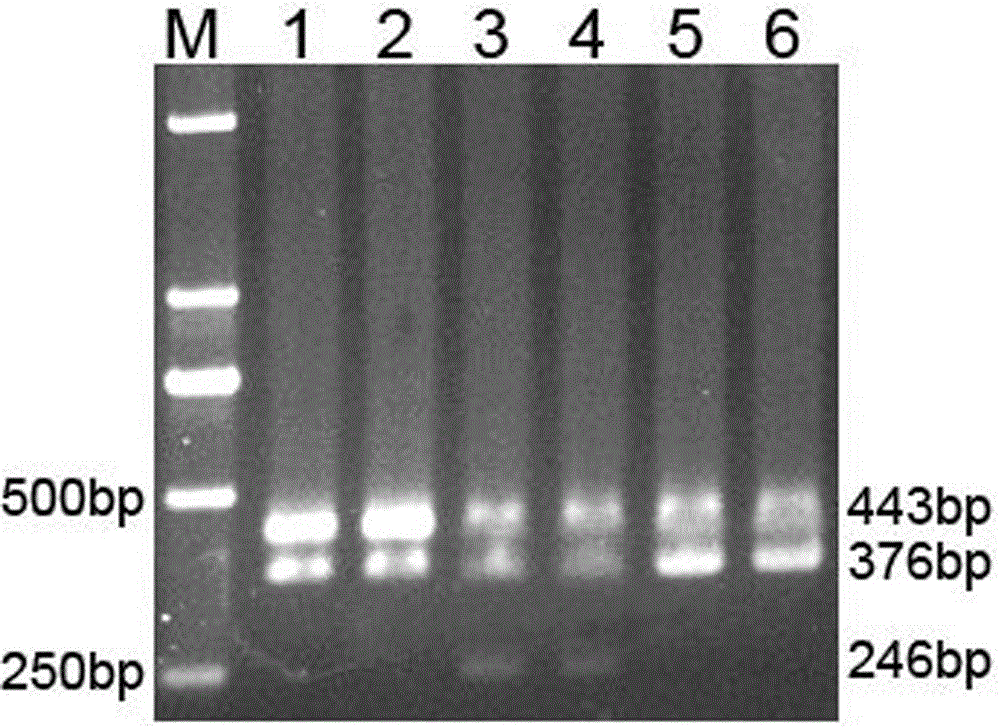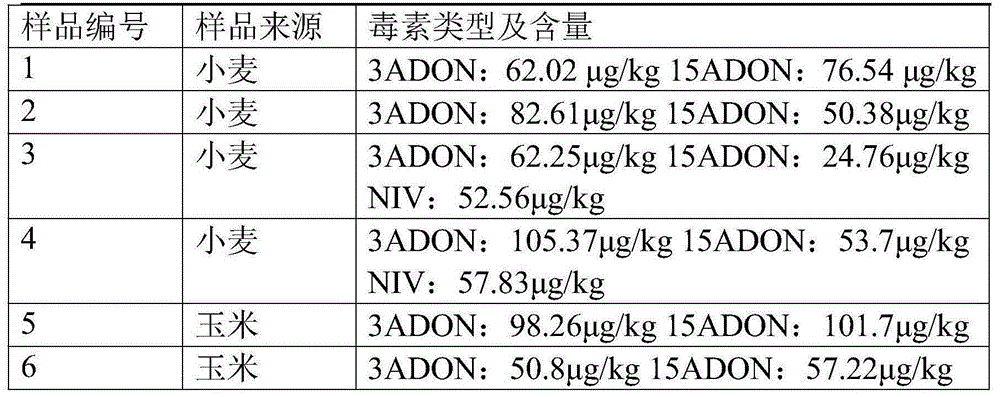Primer for detecting trichothecene group B-class toxin of fusaria through PCR and application of primer
A technique for detecting trichothecenes and primers, which is applied in the determination/inspection of microorganisms, biochemical equipment and methods, DNA/RNA fragments, etc., and can solve the problems of cumbersome sample purification, high technical content requirements, and low cost. , to achieve the effects of easy large-scale promotion and application, accurate detection results, and simple operation
- Summary
- Abstract
- Description
- Claims
- Application Information
AI Technical Summary
Problems solved by technology
Method used
Image
Examples
Embodiment 2
[0031] Example 2 Detection of Fusarium Trichothecenes B Toxoids in Wheat and Corn Grains
[0032] Several samples of wheat and corn with natural disease in the field were taken, ground and pulverized, and template DNA was extracted. The extraction method was the same as in Example 1. The types and contents of toxins contained in the samples were shown in Table 2.
[0033]
[0034] PCR reaction is identical with embodiment 1 with electrophoresis detection method, and detection result is as follows figure 2 As shown, the M lane is the standard value, and its lane numbers correspond to the sample numbers one by one. Among them, the wheat samples in lanes 1 and 2 amplified two specific bands of 443bp and 376bp, and the wheat samples in lanes 3 and 4 In the sample, three specific bands of 443bp, 376bp and 246bp were amplified, and in the corn samples of lanes 5 and 6, two specific bands of 443bp and 376bp were amplified.
[0035] The toxin-producing types of samples 1-6 were v...
PUM
 Login to View More
Login to View More Abstract
Description
Claims
Application Information
 Login to View More
Login to View More - R&D
- Intellectual Property
- Life Sciences
- Materials
- Tech Scout
- Unparalleled Data Quality
- Higher Quality Content
- 60% Fewer Hallucinations
Browse by: Latest US Patents, China's latest patents, Technical Efficacy Thesaurus, Application Domain, Technology Topic, Popular Technical Reports.
© 2025 PatSnap. All rights reserved.Legal|Privacy policy|Modern Slavery Act Transparency Statement|Sitemap|About US| Contact US: help@patsnap.com



